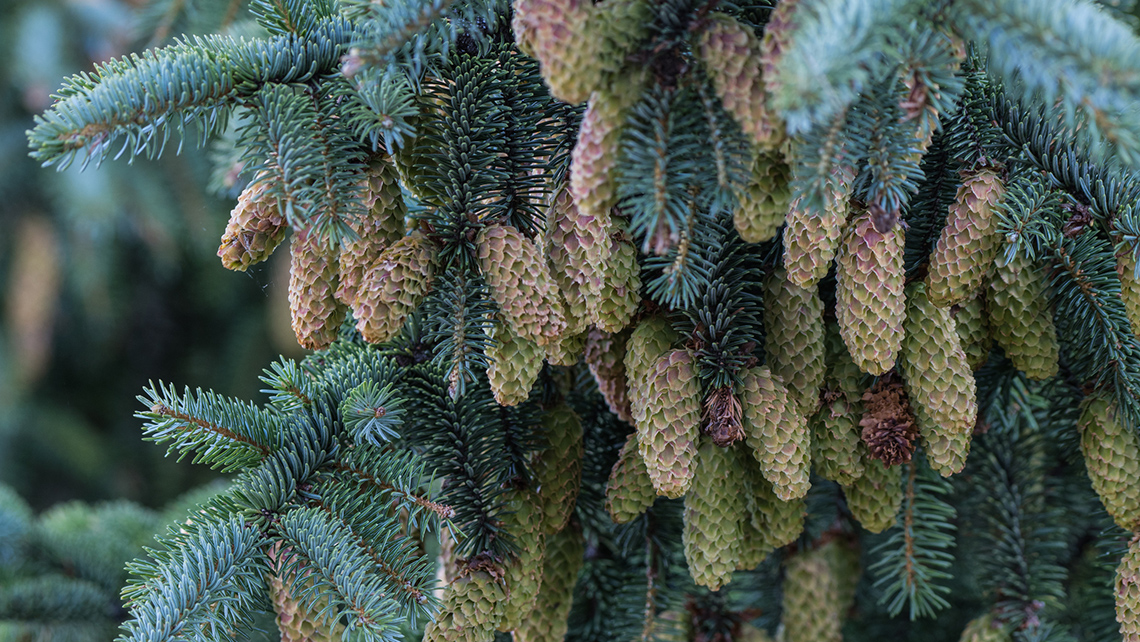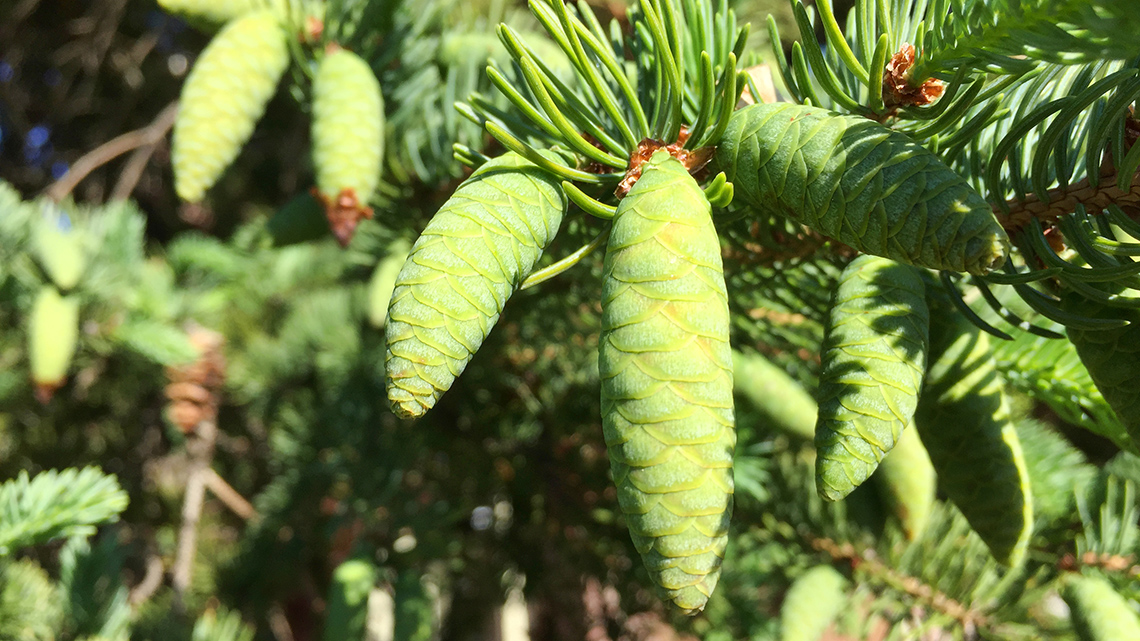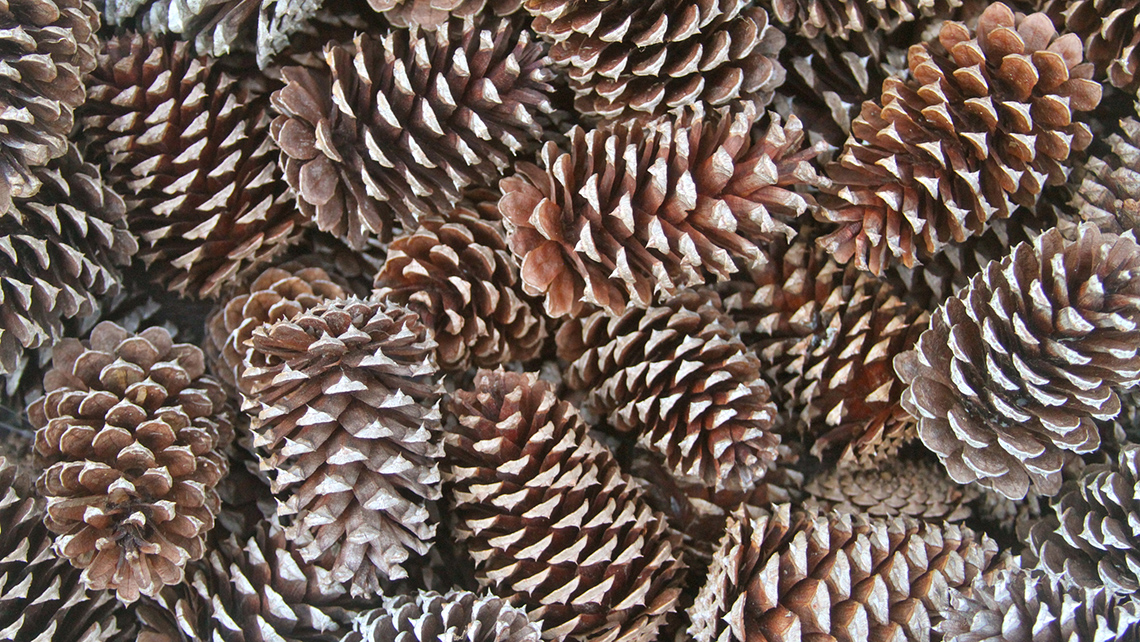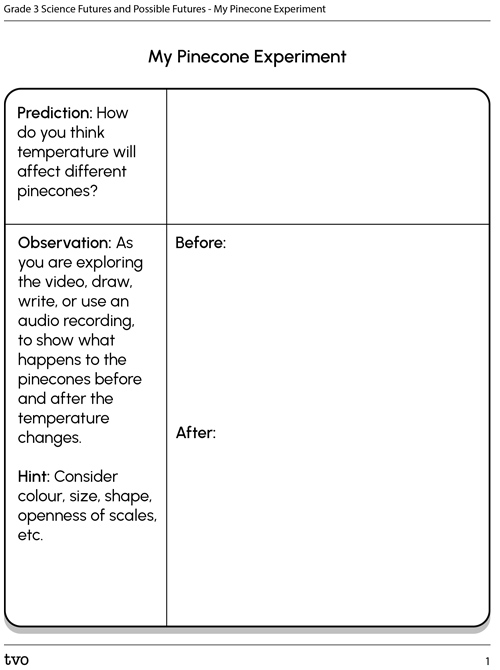Minds On
Pinecones
Explore the following carousel of images and descriptions of pinecones.
As you explore, complete the Pinecone Observations Worksheet in your notebook or using the following fillable and printable document. If you would like, you can use speech-to-text or audio recording tools to record your thoughts.

Press the Activity button to access the Pinecone Observations Worksheet.
Activity (Open PDF in a new window)Action
Trees
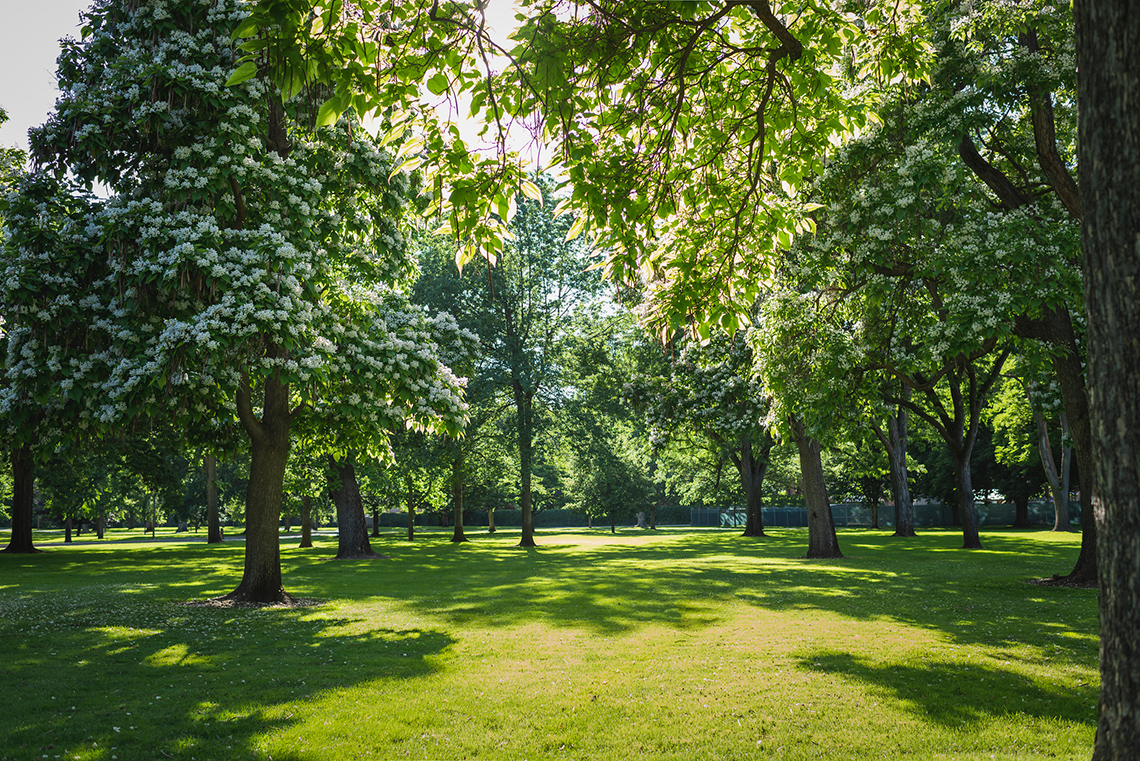
Trees are an important part of the world!
They provide paper, wood, oxygen, and a place for animals to live.
Brainstorm
Nuts and fruit
- Can you think of any nuts or fruits that come from trees?
Brainstorm ideas using a method of your choice.
Press ‘Let’s Check’ to reveal possible ideas.
Possible answers: apples, peaches, oranges, pecans, acorns, or much more!
Types of trees
There are two main types of trees, deciduous trees and coniferous trees.
Explore the following chart of the differences between deciduous and coniferous trees.
|
Deciduous trees |
Coniferous trees |
|---|---|
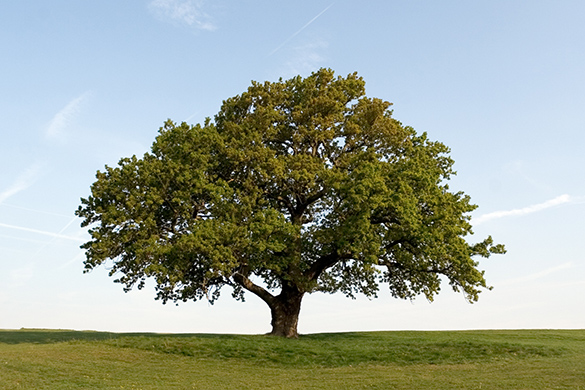
|

|
|
|
Brainstorm
Deciduous and coniferous trees
- What is one major difference between deciduous and coniferous trees?
Record your answer using a method of your choice.
Press ‘Let’s Check’ to reveal possible ideas.
One major difference is that deciduous trees lose their leaves when the seasons change and grow them back, whereas coniferous trees do not lose their leaves, that are usually like needles.
Learning check!
All other trees can be considered deciduous or coniferous trees. Identify which trees are deciduous or coniferous.
All living things, both plants and animals (and even humans!) go through a cycle of life. Trees start off as seeds, they grow and develop, and then will eventually produce seeds of their own.
Explore the following Science North video entitled “The Life Cycle of a Pine Tree” to learn more about how trees grow.
Based on the information from the previous video, complete the following matching activity. Match the name and image to the description.
Pine trees
In Ontario, there are lots of different coniferous trees. Some of these are the eastern white pine, the white spruce, red spruce, eastern hemlock, or eastern white cedar. The cones often have different characteristics. This is to help the seeds have the best chance of survival and reproduction (ability to produce a new tree at the end of its life cycle).
The jack pinecone is one of the cones that has changed so it could survive different conditions. These changes are called adaptations. One special adaptation is called “serotinous cone”. This means the scales on the cone close very tightly and glue together with a natural resin. This natural resin needs to melt for the cone to open up and release seeds. This mostly happens during a fire.
Explore the following image and description and notice that one side has a closed jack pinecone, and the other side is opened.

Explore the following Science North video entitled “The Life Cycle of a Pine Tree” to learn more about jack pine trees.
Let’s experiment!
As explored in the previous video clip, the serotinous pinecone has a special adaptation. It produces a sticky resin that makes sure its “scales” stay closed. This keeps the seeds within the pinecone. They are trapped.
To discover if adding heat will help to open up the sealed serotinous pinecone, you will follow an investigation using the Scientific Experimentation Process.
Scientific experimentation process

In Science we ask questions to help us figure out what the problem is.

Predicting is when you make a guess about what you think will happen in your experiment.

Having a plan means you know the steps you need to do to do your experiment.

When you do an experiment, you are trying to find out the answers to the questions you asked.

You should think about what you have learned. Did you learn anything new? Were your questions answered?

Sharing what you have learned lets other people know about your topic too!
Hands-on Science
Pinecone experiment
In this experiment, you will observe how temperature affects other kinds of pinecones.
Note: we have already engaged in the “Ask” step by identifying the question about how heat affects certain pinecones!
Follow the experiment process using the interactive checklist. Record your ideas using the chart provided, or in another method of your choice.
If possible, follow along with the experiment from home.
Safety
Before you explore the following experiment, let’s perform a safety check.
Press the following tabs for the experiment’s materials and steps.
You will need :
- three pinecones all from the same tree
- three clear jars
- tape
- marker
- water (cold and warm) water
- timer
Explore the following Science North video entitled “The Life Cycle of a Pine Tree” to access the scientific process for this experiment.
Experiment process checklist

Complete the My Pinecone Experiment in your notebook or using the following fillable and printable document. You can also use another method of your choice to record your findings.
Press ‘Conclusion’ to reveal what happens to the pinecones after they have been sitting in different temperatures of water.
When the pinecones are put in warm and cold water, the warm water should make the pinecone open. The cold water will make the pinecone close up even more.
The pinecone that is in warm water opened because a warm temperature usually is a sign that spring has come. The springtime provides good conditions for seeds to sprout and grow.
The cone that is in cold water closed up to protect the seeds from the cold and wet environment. Most pinecones from Ontario will react just like the eastern white pinecones.
Consolidation
Trees and seeds
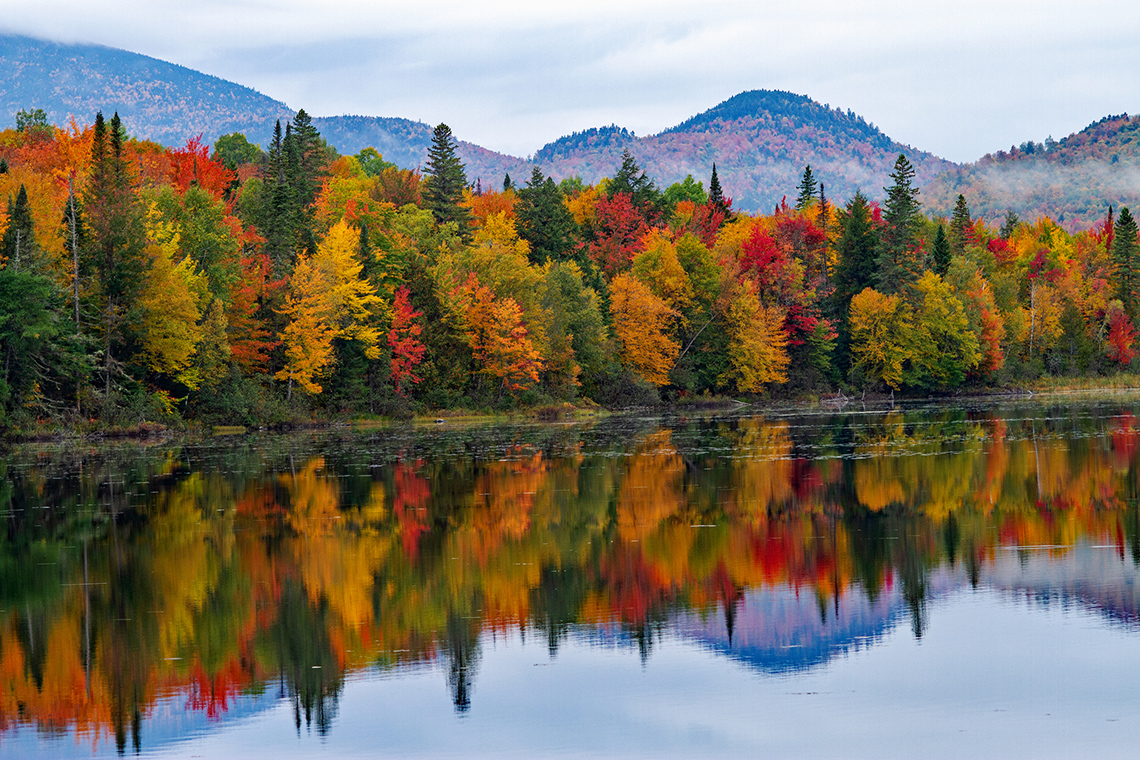
Based on the information you’ve learned about trees, respond to the following questions.
- How does temperature affect a pinecone in Ontario? Why does a pinecone open or close when the temperature changes?
- What is the difference between a coniferous and deciduous tree? Include an image or detailed description of each type of tree, with one example from your learning.
Record your responses using a method of your choice.
Reflection
How do you feel about what you have learned in this activity? Which of the next four sentences best matches how you are feeling about your learning? Press the button that is beside this sentence.
I feel…
Now, record your ideas about your feelings using a voice recorder, speech-to-text, or writing tool.

